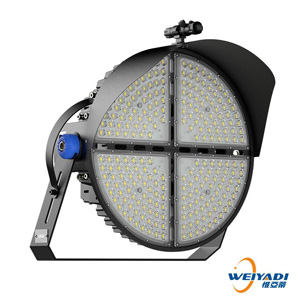- 英文(wén)版
微信咨询

- 4006-999-335
微信咨询


室内體(tǐ)育馆的照明是活动的重要组成部分(fēn),有(yǒu)效的照明可(kě)以提高體(tǐ)育场馆的使用(yòng)效率,改善玩家的活动體(tǐ)验,也能(néng)够為(wèi)观众带来更好的观看體(tǐ)验。因此,室内體(tǐ)育馆的照明设计是非常重要的。
首先,室内體(tǐ)育馆的照明必须能(néng)够满足不同活动和比赛的需求。其中,主體(tǐ)场地使用(yòng)高强度LED型号照明,能(néng)确保比赛或活动进行的顺利,而在外围场地上则可(kě)使用(yòng)低功耗自然光照明,以提高参与者的视觉體(tǐ)验。此外,室内體(tǐ)育馆的座位區(qū)安装高功率大功率LED照明,可(kě)提供观众更好的观看體(tǐ)验,同时节能(néng)减碳,进一步降低观众成本。
另外,室内體(tǐ)育馆室内照明需要设计新(xīn)颖而特殊。由于运动场馆使用(yòng)时间较短,对長(cháng)期使用(yòng)也存在一定风险,因此,在照明安装时要求更高性能(néng)。这将需要承集成電(diàn)路板和防爆照明,以确保照明的可(kě)靠性和安全性,保护玩家、观众和设备的安全。
此外,室内體(tǐ)育馆的照明设计也要兼顾效率和节能(néng)减碳的方面,以及信息的传递和活动的可(kě)持续性。应该安装低碳LED灯泡,使用(yòng)节能(néng)设备,减少能(néng)源的消耗,同时可(kě)以使用(yòng)智能(néng)系统,实现节能(néng)效果和舒适环境,实现绿色环保。

总而言之,室内體(tǐ)育馆的照明不仅要考虑满足不同活动及比赛的需求,还需要注重照明效率和节能(néng)减碳,以提高體(tǐ)育馆的使用(yòng)率并确保安全环境。因此,设计和安装室内體(tǐ)育馆照明灯时一定要慎重,以满足市场的需求。
Lighting for indoor sports stadiums is an important component of activities, and effective lighting can improve the efficiency of sports stadiums as well as provide a better experience for players and spectators. Therefore, the design of lighting for indoor sports stadiums is of great significance.
To begin with, lighting for indoor sports stadiums must be able to meet the requirements of different activities and competitions. High-intensity LED models are used in the main venue to ensure the smooth progress of competitions or activities, while low-power natural lighting can be used in the peripheral areas to improve the visual experience of the participants. Moreover, seats in indoor sports stadiums are equipped with high-power LED lighting to provide the audience with better viewing experiences, while also saving energy and reducing emissions, further reducing the cost of spectators.
In addition, lighting for indoor sports stadiums needs to be designed creatively and specially. Due to the short duration of sports stadiums, there is a certain risk to long-term use, so higher performance is required in lighting installation. This will require integrated circuit board and explosion-proof lighting to ensure the reliability and safety of lighting, and to protect the safety of players, spectators and equipment.
Furthermore, the design of lighting for indoor sports stadiums should also take efficiency and energy conservation into consideration, as well as the transmission of information and the sustainability of activities. Low carbon LED bulbs should be installed and energy-saving devices should be used to reduce energy consumption. At the same time, intelligent systems can be used to achieve energy efficiency and comfortable environment, and realize green environmental protection.
To sum up, lighting for indoor sports stadiums should not only meet the requirements of different activities and competitions, but also pay attention to efficiency and energy conservation, so as to improve the utilization rate of sports stadiums and ensure a safe environment. Therefore, care must be taken when designing and installing lighting for indoor sports stadiums to meet the needs of the market.